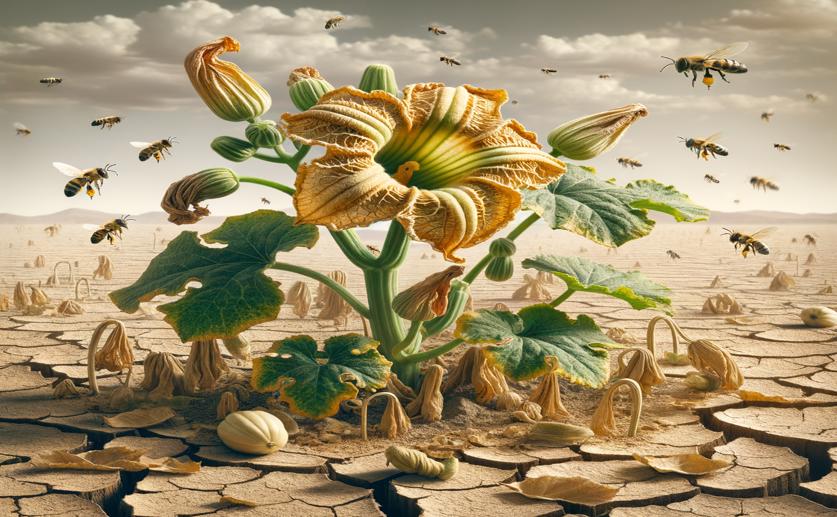
Drought Conditions Limit Pollen in Bee-Pollinated Squash
Greg Howard
4th June, 2024

Image Source: Natural Science News, 2024
Key Findings
- The study from the University of California, San Diego, examined how temperature and soil moisture changes affect squash plant reproduction
- Higher temperatures led to smaller flowers and more pollen, while low soil moisture consistently hindered plant growth
- Honey bee visits increased with temperature in male flowers but decreased with low soil moisture in female flowers
- Soil moisture did not affect pollen deposition by bees, but drought reduced pollen viability, leading to fewer seeds
AgricultureEnvironmentPlant Science
References
Main Study
1) Temperature and soil moisture manipulation yields evidence of drought-induced pollen limitation in bee-pollinated squash.
Published 4th June, 2024
https://doi.org/10.1002/ece3.11400
Related Studies
2) Drought and leaf herbivory influence floral volatiles and pollinator attraction.
3) Warming of experimental plant-pollinator communities advances phenologies, alters traits, reduces interactions and depresses reproduction.
4) Performance of Apis mellifera, Bombus impatiens, and Peponapis pruinosa (Hymenoptera: Apidae) as pollinators of pumpkin.
Journal: Journal of economic entomology, Issue: Vol 104, Issue 4, Aug 2011



 29th May, 2024 | Greg Howard
29th May, 2024 | Greg Howard